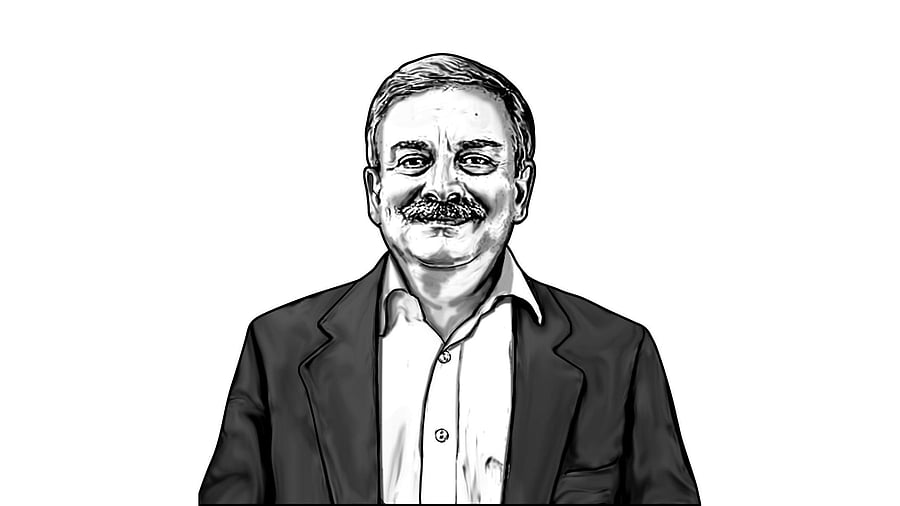
Gurucharan Gollerkeri - the former civil servant enjoys traversing the myriad spaces of ideas, thinkers, and books
Credit: DH Illustration
India is the most populous country but also the youngest, and has the most children and adolescents worldwide, with 35% of the population aged 0 to 19 in 2024. Childhood and adolescence are critical developmental stages for mental health, and the quality of their surroundings affects their well-being and progress. A number of Common Mental Disorders (CMD) originate from deficits in a child’s physical, cognitive, or behavioural functioning, with such developmental disabilities being especially common in urban settings. Children and adolescents frequently experience attention deficit hyperactivity disorder (ADHD), intellectual difficulties or other learning disorders, autism spectrum disorder (ASD), depression, anxiety, and behavioural issues.
Growing common mental health problems in adolescents is a matter of concern. An estimated 7% of the 250 million adolescents experience behavioural difficulties, depression, and anxiety disorders. They are the subjects of 25% of suicides. The UNICEF-Gallup survey of 2021 highlighted the fact that adolescents in India were hesitant to seek help for mental stress, with only 41% of young people aged 15 to 24 saying it is helpful to seek help for mental health concerns. Assessment of CMD tends to overestimate prevalence and often fails to recognise age-appropriate symptoms, and treatment responses are focused on clinical settings, medication, and therapy. Hence the importance of non-clinical settings. Evidence from ‘The burden of mental disorders across the states of India: the Global Burden of Disease Study 1990-2017’, showed that depression and anxiety disorders contribute to the highest disease burden in adulthood. The highest contribution to Disability Adjusted Life Years (DALY) from mental disorders in India is from depressive disorders (33.8%,) and anxiety disorders (19%). The prevalence of depressive disorders was positively associated with the suicide death rates at the state level for both genders.
Teenage vulnerabilities arise from multiple causes. Adolescents in poor and marginalised communities face economic deprivation and social exclusion; childhood abuse, gender violence, discrimination, substance abuse, and broken homes; early in life. They need help but have little access or the means to seek help. Most of them attend government schools. In this resource-poor setting, it is the responsibility of all stakeholders – parents, teachers, and the community – to support their mental health. Such support should help reinforce positivity, inculcate problem-solving skills, enable early detection of behavioural difficulties, encourage seeking help, and help prevent the onset of CMD.
Efforts have been made by successive governments in this direction. India launched the National Mental Health Programme in 1982 and revised it in 1996 as the District Mental Health Programme. The National Mental Health Policy was introduced in 2014 and a rights-based Mental Healthcare Act in 2017 replaced the Mental Healthcare Act of 1987. The child health programme under the National Health Mission and the National Adolescent Health Programme includes components to address the mental health of children and adolescents. Yet, poor implementation of mental health services in India constitutes a major structural barrier, with a high treatment gap for mental disorders, poor evidence-based treatment, and gender-differentials in treatment. Part of the problem is the shortage of mental health personnel in India, with two mental health workers and 0.3 psychiatrists per 100,000 population, which is much lower than the global average. This is unlikely to change much in the near future.
Given this hard constraint, and to overcome the legacy issues of the shortage of trained staff, the apathy of educational institutions, the stigma surrounding CMD, and often the reluctance of parents, a radically different approach is necessary. The growing psychological stress faced by adolescents arising from the gaps in aspirations and attainment regarding education, employment, and sexuality; and the threat arising from social media and peer pressure underlines the need to ensure their psychosocial well-being through active collaboration – in a non-clinical setting – between parents, teachers, and the adolescents themselves. In doing so, the importance of evidence-based interventions needs to be emphasised. It is also necessary to deploy the transformative power of artificial intelligence-based neural networks to draw insights on the psycho-social needs of adolescents.
The theory of change must circumscribe the goal of promoting positive mental health predicated on triggering hope and aspiration in the adolescents – at home and at school – to restore the locus of control to them to overcome adversity and psycho-social challenges. Enhancing adolescents’ agency implies a fundamental shift in the way one perceives adolescents, as autonomous individuals whose views and concerns are valid in their own right; their lived experience as a legitimate factor influencing their mental health; their competence to make and implement decisions recognised as valid; and their right to privacy respected. The drivers of teenage vulnerabilities are intrinsic to adolescence – minds that are passionate, irascible, and impulsive (as Aristotle observed several hundred years ago). But the adolescent years are also the wonder years that we must help them cherish.